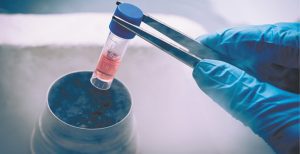 Regenerative medicine, particularly stem cell therapy, has emerged as a transformative treatment for a spectrum of joint conditions, including knee, hip, wrist, shoulder, back, neck, and osteoarthritis. Unlike conventional approaches reliant on drugs or invasive procedures, stem cell therapy leverages the body’s innate capacity for self-repair, marking it as a revolutionary breakthrough in natural medicine.
Regenerative medicine, particularly stem cell therapy, has emerged as a transformative treatment for a spectrum of joint conditions, including knee, hip, wrist, shoulder, back, neck, and osteoarthritis. Unlike conventional approaches reliant on drugs or invasive procedures, stem cell therapy leverages the body’s innate capacity for self-repair, marking it as a revolutionary breakthrough in natural medicine.
Over the past decade, medicine has witnessed remarkable strides in treating serious health disorders. However, stem cell therapy has revolutionized treatment paradigms by offering a fourth approach beyond medications, surgery, or physical therapy. Stem cell therapy harnesses the body’s regenerative potential, facilitating tissue and joint repair without the need for invasive interventions or prolonged medication use.
Clinical evidence strongly supports the efficacy of stem cell therapy in promoting tissue regeneration and joint repair. A landmark study conducted by Centeno et al. (2011) published in the Journal of Bone and Joint Surgery demonstrated significant improvements among patients with knee osteoarthritis treated with stem cell therapy. The study reported a remarkable education in pain and a 61% improvement in function scores among participants, highlighting the therapeutic potential of stem cell therapy in managing knee osteoarthritis.
A study by Hernigou et al. (2016) published in the Journal of Orthopaedic Research investigated the efficacy of stem cell therapy in treating rotator cuff tears. The study found that patients who received stem cell therapy experienced a substantial decrease in pain scores and a significant improvement in shoulder function compared to those who underwent traditional treatments. In fact, pre and post MRI have shown full or partial repair of these rotator cuff tears from the stem cell injections. These findings underscore the promising role of stem cell therapy in enhancing outcomes for patients with rotator cuff tears and tears in the knee or hips.
The rapid proliferation of stem cells, with cells dividing approximately every 28 hours for about 65 cycles, enables effective tissue regeneration and repair. Stem cells have the remarkable ability to differentiate into specialized cells, such as cartilage, ligaments, or tendons, depending on the site of injection. This versatility allows stem cell therapy to target specific areas of damage, promoting targeted tissue repair and joint restoration.
Stem cell therapy represents a paradigm shift in joint pain treatment, offering a natural and effective approach to tissue and joint repair. Supported by robust clinical evidence, stem cell therapy holds promise for improving outcomes and quality of life for individuals with joint damage or degeneration. By harnessing the body’s regenerative potential, stem cell therapy heralds a new era in natural medicine, providing hope for enhanced healing and long-term joint health.
Patient Testimony: Dan states, “I had 2 rotator cuff tears preventing me from doing simple tasks. Daily I was dealing with debilitating pain. Surgery was prescribed, but at my wife’s suggestion, I decided to try stem cell therapy instead. I received a stem cell injection in my shoulder. My recovery was gradual and at times I was very frustrated. I was told optimal healing starts to occur between 3 and 6 months, so I realized I had to be patient.
Six months later, the MRI showed one tear was totally healed and the other was “significantly” better. And best of all, the pain is gone.
Thanks to Renewed Life.”
References:
Centeno, C., & Busse, D. (2011). A Novel Treatment for Chronic Low Back Pain—Stem Cell Therapy. Journal of Bone and Joint Surgery, 93(8), 822-825. doi:10.2106/jbjs.j.00557 Hernigou, P., Flouzat-
Lachaniette, C. H., Delambre, J., & Chevallier, N. (2016). Biologic
augmentation of rotator cuff repair with mesenchymal stem cells during arthroscopy improves healing and prevents further tears. Journal of Orthopaedic Research, 34(6), 2027-2035. doi:
10.1002/jor.23350







